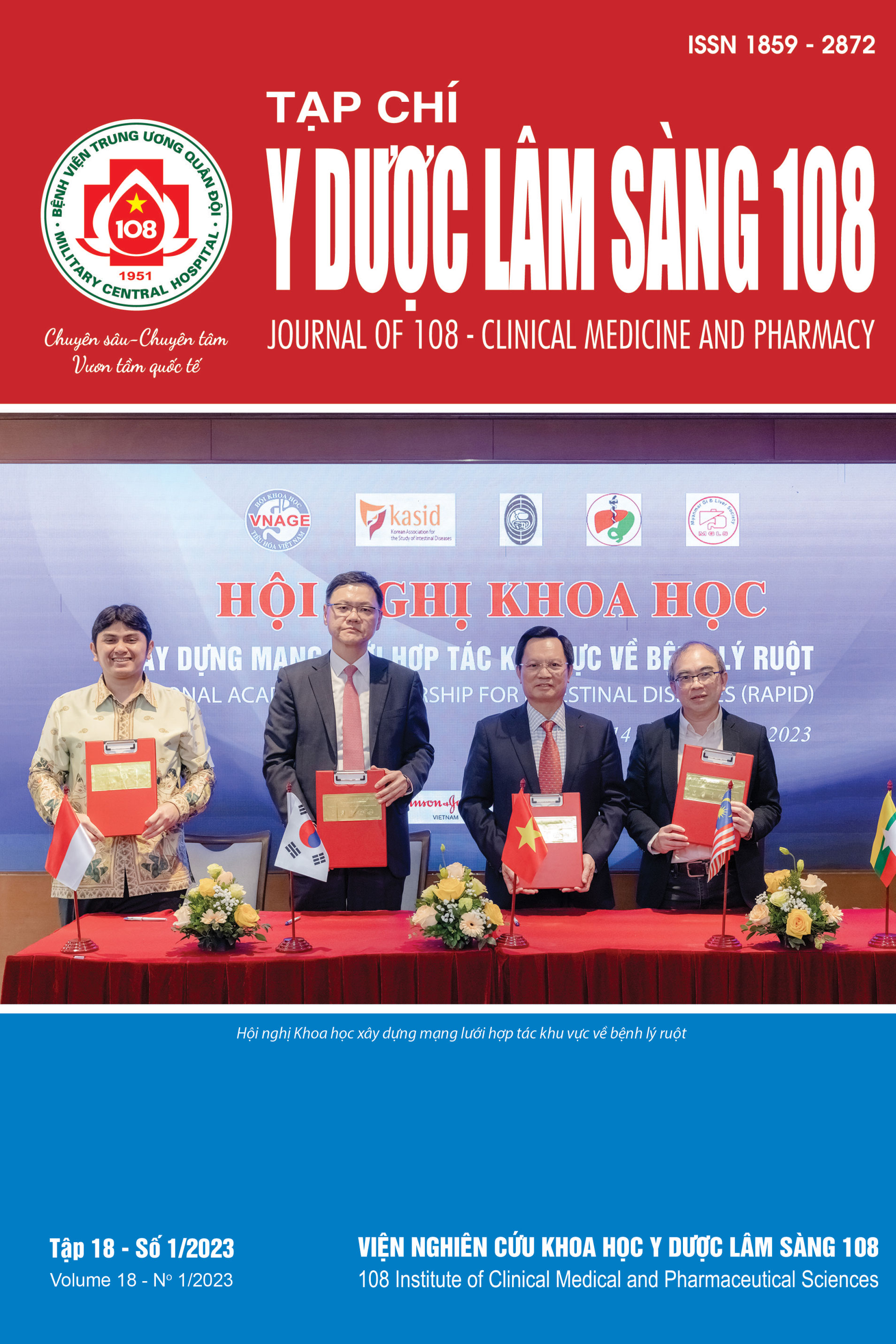Clinical features and related factors of erythroderma at Ho Chi Minh City Hospital of Dermatology and Venereology from 2016 to 2020
Main Article Content
Keywords
Abstract
Objective: To survey clinical characteristics of erythroderma at Ho Chi Minh City Hospital of Dermatology and Venereology and the trends of etiologies from 2016 to 2020. Subject and method: We designed a cross-sectional study of 412 cases of erythroderma patients during the period of 01/01/2016 to 31/12/2020, Result: The mean age was 56.58 with a male/female ratio of 4.7/1. Mean BMI was 21.79. The recurrence rate was 75.2%. Outstanding clinical features: Fever 11.1%, severe itching 67.7%, severe pain 9.2%; fatigue 2.4%, exfoliation 83.0%, leakage 29.4%, nail damage 30.3%. Blood abnormalities that were statistically different between improved and non-improved treatment outcomes include: Lymphocyte count, HCT, creatinine, SGOT, SGPT, albumin. There were 4 groups of causes of erythroderma: Pre-existing skin disease (88.35%), drugs (8.98%), cancer (1.21%) and unknown cause (1.46%). Percentage of erythroderma due to pre-existing skin diseases tended to decrease gradually, while drug-induced causes tended to increase gradually over recent years. Conclusion: Cause of pre-existing skin diseases tend to decrease over recent years. On the contrary, drug-related causes tend to increase gradually over recent years.
Article Details
References
2. Nguyễn Vũ Hoàng (2019) Nồng độ Vitamin D và Canxi trong huyết thanh và các yếu tố liên quan ở bệnh nhân Đỏ da toàn thân tại bệnh viện Da Liễu Thành phố Hồ Chí Minh. Luận văn tốt nghiệp CK2 chuyên ngành Da Liễu. Đại học Y dược Thành phố Hồ Chí Minh.
3. Nguyễn Vũ Hoàng, Ngô Minh Vinh và Vũ Hồng Thái (2008) Khảo sát đặc điểm dịch tễ học, nguyên nhân, lâm sàng và cận lâm sàng của ĐDTT. Sinh hoạt khoa học kỹ thuật da liễu, kỳ 3, tr. 35-47.
4. Phạm Quốc Thảo Trang (2019) Đặc điểm lâm sàng, cận lâm sàng trong đỏ da toàn thân. Y học TP. Hồ Chí Minh, tập 23, số 1, 2019.
5. Phạm Văn Hiển (2009) Bệnh da có vảy. Da liễu học. NXB Giáo dục Việt Nam, Hà Nội, tr. 57-62.
6. Võ Thị Như Huê (2007) Nghiên cứu về bệnh đỏ da toàn thân gặp tại Bệnh viện Da Liễu từ năm 1999-2004. Sinh hoạt khoa học kỹ thuật da liễu, 1, tr. 6-19.
7. Li J, Zheng HY (2012) Erythroderma: A clinical and prognostic study. Dermatology 225: 154.
8. Morar N, Dlova N, Gupta AK, Naidoo DK, Aboobaker J, Ramdial PK (1999) Erythroderma: A comparison between HIV positive and negative patients. Int J Dermatol 38(12): 895-900.
9. Pal S, Haroon TS (1998) Erythroderma: A clinico-etiologic study of 90 cases. Int J Dermatol 37(2): 104-107.
10. Yuan XY, Guo JY, Dang YP, Qiao L, Liu W (2010) Erythroderma: A clinical-etiological study of 82 cases. Eur J Dermatol 20(3): 373-377.
 ISSN: 1859 - 2872
ISSN: 1859 - 2872
